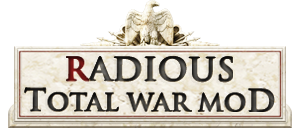Fire Pot Dieres - Militia Hoplites
Fire pots, hurled onto enemy decks, are a terrible threat to wooden ships.Any honest citizen can take up the shield and answer to the name of "hoplite".
The waterline ram was first mounted on a vessel in around 850BC. Warships and naval tactics were transformed. Ships were no longer platforms for infantry battles on the water; the ship itself became the weapon. Galleys changed as the new reality sank in. Ramming at speed would hole and sink an enemy, therefore slimmer, faster, handier ships were required. More speed on demand obviously required more oars a fast ship with a single row of oars ended up being stupidly, impractically long. The solution, then, was to put in a second set of oars above the first, but slightly offset to allow for rowers' benches. These biremes, a Latin word meaning 'two oars', or dieres, the Greek equivalent, were no longer than previous designs but had twice the number of rowers. They were fast, manoeuvrable, and could carry a fighting contingent. Some nations also gave their bireme crews fire pots; these clay pots filled with oil and pitch were hurled at enemy ships in the entirely reasonable hope of setting them ablaze.
(Militia Hoplites)
Hoplites date back to the wars between the Greek city-states in the 8th and 7th centuries BC. During the Greco-Persian Wars most hoplites wore a Corinthian-style bronze helm, and a cuirass of bronze or stiffened linen or canvas. They were armed with a short sword and an iron-tipped spear with a bronze counterbalance butt-spike. Hoplites were named, though, after the round hoplon shield they carried. The hoplon-and-spear combination required them to fight as a phalanx, a block of spearmen some eight ranks deep. When closed up, each man would find shelter behind the shield of his neighbour, creating a wall of bristling spear-points. While all hoplites were originally citizen-soldiers, full-time mercenaries took over and became the standard fighting unit of the Greek world. Later, under Phillip II of Macedon and Alexander the Great, the shield became smaller, while the spear developed into the five metre sarissa pike. Many armies adopted the phalanx of hoplites as a tactical unit because it was very successful in battle.
Unit Name Fire Pot Dieres - Militia Hoplites |
Main Unit Key Gre_Militia_Hop_Two_Fire_Pots |
Land Unit Key Gre_Militia_Hoplites |
Naval Unit Key greek_fire_pot_two |
Soldiers 60 |
Category Medium Ship |
Class Melee Ship |
Custom Battle Cost 550 |
Recruitment Cost 550 |
Upkeep Cost 70 |
Ship Health 467 |
└ Ship greek_two |
Ship Speed 6 |
Melee Attack 20 |
Weapon Damage 30 |
├ Melee Weapon rome_hoplite_spear |
├ Melee Damage Base 16 |
├ Melee Damage Ap 14 |
├ Armour Piercing No |
├ Bonus vs. Large 10 |
├ Bonus vs Elephants 12 |
└ Bonus vs Infantry 0 |
Charge Bonus 18 |
Melee Defence 66 |
├ Base Defence 40 |
├ Shield hoplite |
└ Shield Defence 26 |
Armour 70 |
├ Armour cloth |
├ Armour Defence 27 |
└ Shield Armour 43 |
Health 70 |
├ Man Entity rome_infantry_hoplite |
├ Man Health 60 |
└ Bonus Hit Points 10 |
Base Morale 35 |
Abilities
Fire Pot Dieres- Row Hard 10
Increases speed for 10 strokes.
Ship speed
- Hoplite Wall
The unit moves into close wall formation.
Bracing, melee defence, shield strength
Acceleration, speed - Square
The unit moves into a close square formation.
Bracing, morale, melee defence
Can't move - Rapid Advance
Improved unit movement speed over an extended period.
Speed, acceleration, charge speed
Exertion: fatigue
Attributes
- Hide (forest)
This unit can hide in forests until enemy units get too close.
Strengths & Weaknesses
Fire Pot Dieres- Very poor hull strength
- Very light crew
- Fast speed
- Very strong initial ramming
- Good boarding
- Average defensive unit
- Low damage but average armour penetration
- Weak attack
- Poor morale
| Faction Availability | |
|---|---|
| Grand Campaign | |
| Samnite Wars | |
| Hannibal at the Gates | |


 Français
Français Italiano
Italiano Deutsch
Deutsch Español
Español Русский
Русский Čeština
Čeština Polski
Polski Türkçe
Türkçe 简体中文
简体中文 正體中文
正體中文 日本語
日本語
